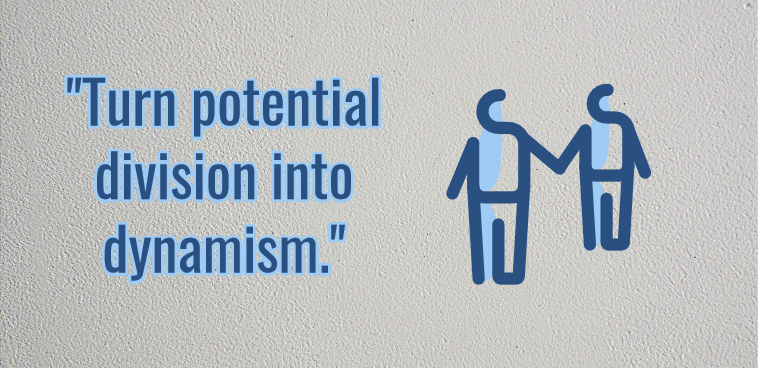A couple of weeks ago I enjoyed an interesting taste of Americana, traveling with a client to a back-to-back series of meetings in Chicago, Dallas, Atlanta, Boston and New York, each attended by a variety of people from the surrounding regions of those cities. You can imagine the variety of accents we heard from those who attended. Even the meeting rooms had different vibes.
Since all of the attendees worked in the same industry, there was also a notable amount of commonality — in the risks they face, the rewards they pursue, the challenges they deal with and the camaraderie they share. It was fascinating to see the interplay of diversity and community.
Though the travel was exhausting, the experience was fascinating. As we made our way from Midwestern droll to Texas twang to Southern drawl and beyond, I couldn’t help but notice how different people seemed on the surface. But as we talked about the same issues and opportunities in each meeting, it was clear that they were very much the same underneath. It depended on whether I was focused on form or substance.
See an observation coming? It goes far beyond how people pronounce their words.
Variety is the spice of business, as it is of life. And diversity is like a spice rack: Each of us has a flavor of our own, but it’s in melding them together that the unique and special taste arises. Great advances come from people with unique perspectives working towards a common goal.
A few years back my firm was tasked with developing a rebranding strategy for a Fortune 100 corporation that operated in some 30 countries. Because it was an international assignment, we had to identify a compelling brand identity that would not be rooted in any one language or culture; it had to be a global truth that could then be interpreted locally in a variety of different countries around the globe. Which meant we had to strip away every idea that wasn’t fundamentally human.
Once we understood the fenceposts, the task actually became somewhat simpler. For a local, regional or national brand, it would have been OK (and perhaps advisable) to tap into local, regional or national cultural touchpoints. For a global brand, however, the idea had to be universal. But there were plenty of ideas to work with, because we’re all human. We just had to be more intentional in unearthing them.
That perspective has helped my firm fully benefit from the diversity in our own company, which we honestly believe is a cornerstone of our success. It has also shaped the way we approach our engagements with clients. We generate new momentum for struggling companies by addressing not only their external strategic challenges but also the internal dynamics that can derail them as well. Part of our task is to help turn potential division into dynamism.
That’s not always easy. Just as none of us recognizes our own accent, it can be easy to consider our own perspective as the norm. That’s rarely the case, of course, but pursuing unity in diversity is where the power lies.
My whirlwind trip underscored the fact that it doesn’t matter whether someone refers to a group as “you all,” “y’all,” “you guys” or even “yous guys.” As different as we are on the surface, we’re the same underneath. Just as people express a common language through different accents, we express our common humanity from different perspectives. Finding the fusion is where magic happens.
“E pluribus unum” — out of many, one. That’s always been a pathway to prosperity — for a company as well as a country.
Each month, When Growth Stalls examines why businesses and brands struggle and how they can overcome their obstacles and resume growth. Steve McKee is a co-founder of McKee Wallwork + Co., a marketing advisory firm that specializes in turning around stalled, stuck and stale companies. The company was recognized by Advertising Age as 2015 and 2018 as Southwest Small Agency of the Year. McKee is also the author of “When Growth Stalls” and “Power Branding.”
SmartBrief offers more than 200 newsletters, including SmartBrief on Leadership and newsletters for small businesses and marketers and advertisers.
